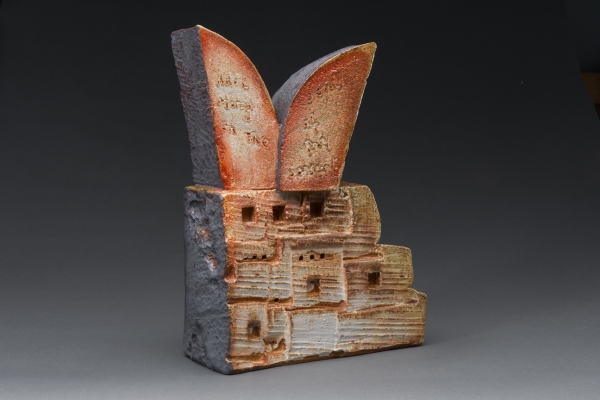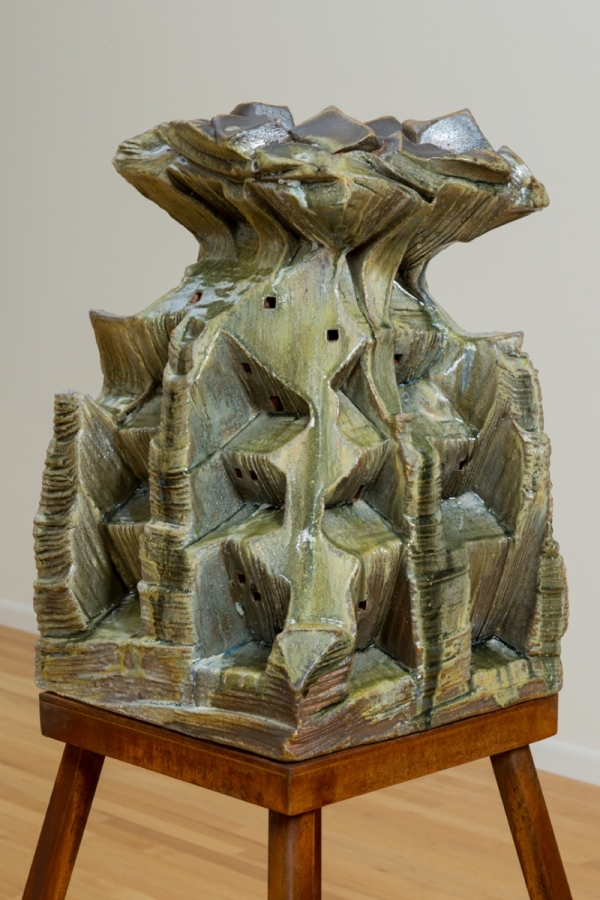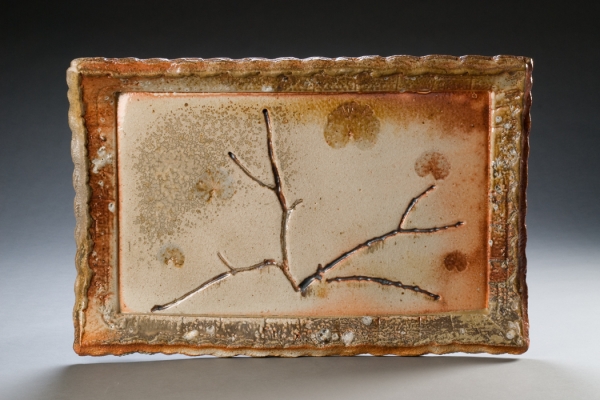
Fallen empires, lost peoples, ancient cultures and what they once produced -- like fallen leaves and dead trees -- comprise the very ground we walk upon. What has passed before, what Tony Moore refers to as “the relationship of humanity and nature," that magnificent mix of man and mother earth is at the core of his content. There is that sense of monumentality, that massiveness of told and untold history that we might feel, what Moore gathers in through direct experience, cognitive or corporeal, as he builds up and cuts away with and within his earthen clay is his expression. He remains connected, as we all should, to the past as there is an endless life energy that both stirs and cleanses Moore’s thoughts and imaginings. To Moore, all cultures, all systems and societies past and present are part of a continuous need to feel connected and complete. It is also vital that we have hope and that we stand up for unity and understanding so good can triumph over evil intent and oppression. Moore references in his work an inspiring 1965 quote by Dr. Martin Luther King which states: “History will have to record the greatest tragedy of this period of social transition was not the vitriolic words and other violent actions of the bad people but the appalling silence and indifference of the good people. Our generation will have to repent not only the words and acts of the children of darkness but also for the fears and apathy of the children of light.” You see this light, that hope in the details with the cut out “windows” that traverse a mass of formed and fired clay in Children of Light 4 (2017), as it brings illumination into the hollowed, beckoning darkness. You see selectively placed white geometric forms in his sculptures like Children of Light 3 (2017), as they enlighten and enliven the ambient earth tones of the step-like forms that first recede then reach upward. At the top is glass, previously molten in the kiln, which offers the life supporting water to the bare terrain. Children of Light 3 also stands as a testament to the growth that accompanies seeking and learning that when left unchecked and protected by wisdom, allows our children to strive for the greatness they deserve.

Everything has memory. Nothing exists outside the cycle of life, even as things change to previously unimagined heights or depths, especially with the current divisive and damaging political climate. Yet, despite the socio-political affront to Moore’s morals and beliefs his art is more about standing firm and undeterred by the insanity than it is a gut reaction to it. His art transcends the riffraff. It grounds us, and most importantly, it roots Moore in his unflinching principles as he stokes the days’ long flame of his anagama-noborigama wood-fire kiln in the production of his thoughtful and inspiring works. There is peace of mind in the process; precision in his methods and pride in the results as his art is part of a time-tested tradition that began over 1,600 years ago in Asia – the same basic tools and techniques perfected in Japan in the 5th century.
Moore often utilizes the cut-away portions or the “fragments” of larger works that are reshaped, glazed and fired as they become more intimate in scale and referential in their form and detail. In Blue And Green #13.11.15 (2015) and Death Of Gods #19.7.15 (2015) we see portions of A Prayer for the Souls in Purgatory the artist happened upon when going through some old family documents. The prayer, which paints a very dark picture with phrases like “…let some drops of Thy Precious Blood fall upon the devouring flames…” also speaks of compassion, while the intensity of those same “devouring flames” is a clear reference to the intense wood fire in Moore’s kiln. With both, we have a level of redemption suggested especially with the toil of creating, that 99 percent of perspiration that follows one percent of inspiration, which is often rewarded with a substantive art.

Moore also offers a different kind of narrative, vignettes more common to two-dimensional art such as painting and photography with Fire Painting #9.7.10 (2010), which has a distinct reference to a Japanese Sumi-e painting with its imprint of a small branch; or something far more western and painterly in Fire Painting #1.7.16 (2016) which has something of the physical and psychological feeling of a late Van Gogh.
What is abundantly clear is Moore’s constant and unrelenting passion to create. He challenges the limits of his medium moving further and further into new territories and iconic symbols. Moore brings the earth and clay to a level of storytelling that is both ancient and forward-looking as he combines tangible and valuable substance with powerful forms and dynamic technique.
